| Author |
Message |
Waldemar Duszka

Location: Polska Joined: 25 May 2012
Posts: 57
|
 Posted: Mon 06 Aug, 2012 5:31 am Post subject: Celtic Thracian knives, Sica. Posted: Mon 06 Aug, 2012 5:31 am Post subject: Celtic Thracian knives, Sica. |
 |
|
Hi all ....
This is my first post, so introduce myself, Ibor in Polish.
I'm curious matter of fixing cladding fighting knives with Celtic Thracian border, the period of La Tene, knives, a sica.
The museum in Ljubljana, the exhibits are two such "knife".
I put a picture.
Linings were organic (wood, bone, antlers), rivet holes are too large to rivets of iron, at this thickness is not so ....... zachwały the rivets were also organic?
We apologize for possible errors in spelling ...... I use the interpreter.
 Attachment: 51.84 KB Attachment: 51.84 KB
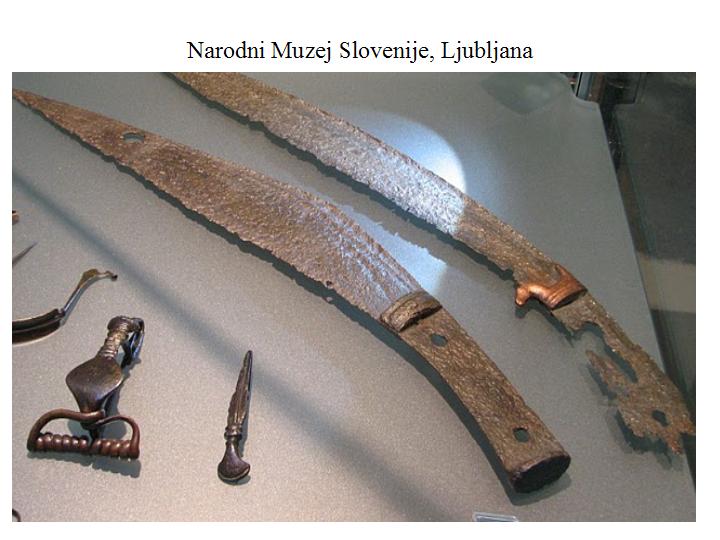
|
|
   |
 |
Craig Johnson
Industry Professional

|
 Posted: Mon 06 Aug, 2012 5:43 am Post subject: Knives Posted: Mon 06 Aug, 2012 5:43 am Post subject: Knives |
 |
|
Thank you Ibor
Those are great examples of that type of knife.
The larger rivet holes maybe due to corrosion or they may have used tube rivets in addition to them possibly being a different material as you have pointed out.
Best
Craig
|
|
    |
 |
Waldemar Duszka

Location: Polska Joined: 25 May 2012
Posts: 57
|
 Posted: Mon 06 Aug, 2012 6:15 am Post subject: Posted: Mon 06 Aug, 2012 6:15 am Post subject: |
 |
|
The holes in the two copies are too equal to this was the corrosion.
Tubular rivets, of course, used already in the Bronze Age in the example Liptov type swords, but they were of bronze, copper would be so preserved.
In my opinion, "rivets" were made of wood and no trace of them was.
For this piece of iron hilt and head to just keep lining rivets front and back, gently, especially since they are also glued to the handle.
Recently just such a knife and reconstructed for the first time I used "rivets" wood.
Same pads were made of oak wood and rivets made of beech wood, that was on the offensive with fat greater contrast.
|
|
   |
 |
Romulus Stoica

Location: Hunedoara, Transylvania, Romania Joined: 26 Oct 2006
Posts: 124
|
 Posted: Mon 06 Aug, 2012 12:27 pm Post subject: Posted: Mon 06 Aug, 2012 12:27 pm Post subject: |
 |
|
|
Sica were never related to celtic people, they belong to the Thracians and Dacians. Dacians used the thracian sica together with the celtic straight longsword, but the sica was never discovered in areas inhabited by celtic tribes in ancient Dacian Kingdom.
|
|
   |
 |
Luka Borscak

|
 Posted: Mon 06 Aug, 2012 3:30 pm Post subject: Posted: Mon 06 Aug, 2012 3:30 pm Post subject: |
 |
|
Here are some similar knives from Archeological Museum in Zagreb:
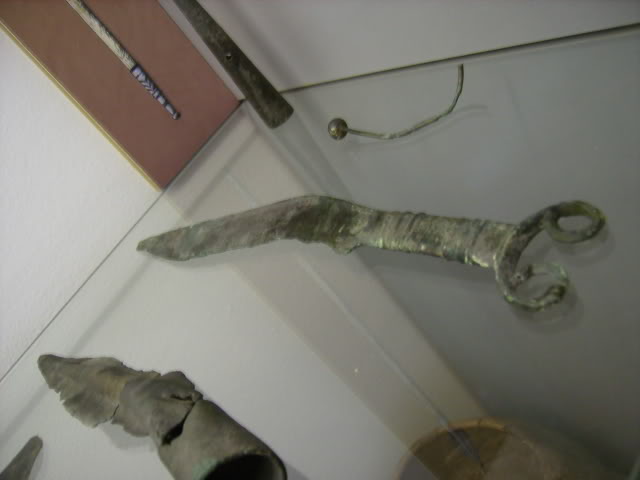
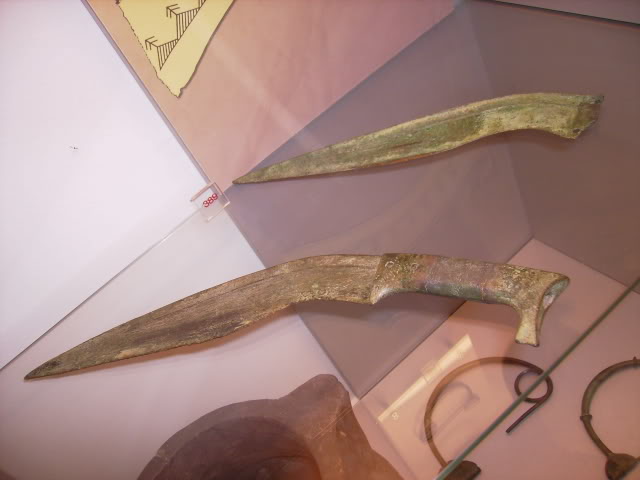
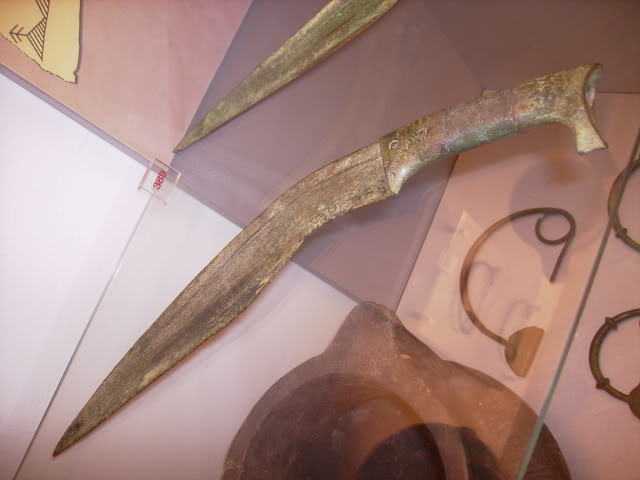
|
|
  |
 |
|
Scott Woodruff
|
 Posted: Mon 06 Aug, 2012 4:54 pm Post subject: Posted: Mon 06 Aug, 2012 4:54 pm Post subject: |
 |
|
|
Ibor, I would love to see pictures of your reconstruction. I like the idea of wooden "rivets" and have been rolling around the idea of doing a messer with such ever since I first heard of their use. I really like the look of these curved Balkan knives, but I must resist the temptation to start one as I really must concentrate on finishing my 11th C kit first. Someday I hope.
|
|
  |
 |
Romulus Stoica

Location: Hunedoara, Transylvania, Romania Joined: 26 Oct 2006
Posts: 124
|
|
   |
 |
Waldemar Duszka

Location: Polska Joined: 25 May 2012
Posts: 57
|
 Posted: Tue 07 Aug, 2012 4:42 am Post subject: Posted: Tue 07 Aug, 2012 4:42 am Post subject: |
 |
|
Romulus, Sica is a weapon only Track \ Dack??
Definitely not, first of all: a lot of Celtic tribes inhabited the Balkans in the period from the first appearance of iron units, forged "on one side" with a distinctive "blood channel".
About this category, we can say that it is "the most track", eg:
copy of Mala Vrbice and Piatra Craivii, dating to the 3-2 BC
For the same period, there are many other finds, "curved knives", as determined by Western literature, a decidedly different design as well as the blade handle.
Scoot, I put some pictures of my Sic, together with that of the wooden rivets.
 Attachment: 31.47 KB Attachment: 31.47 KB
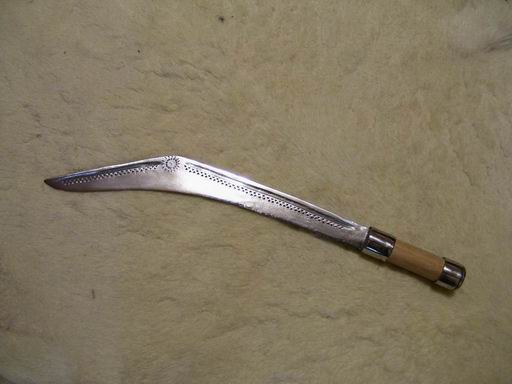
 Attachment: 31.58 KB Attachment: 31.58 KB
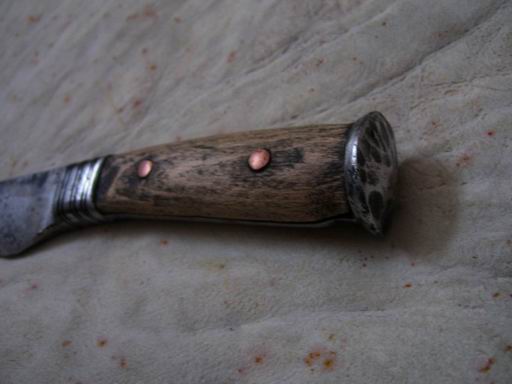
 Attachment: 32.2 KB Attachment: 32.2 KB

 Attachment: 33.92 KB Attachment: 33.92 KB
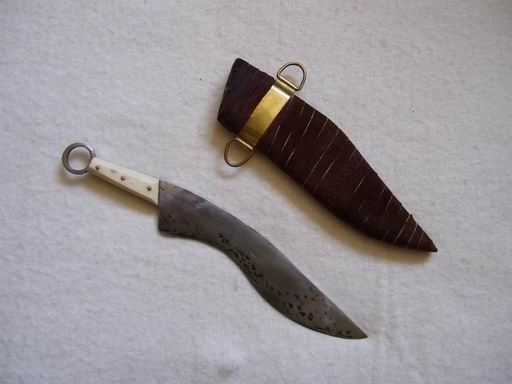
 Attachment: 32.52 KB Attachment: 32.52 KB
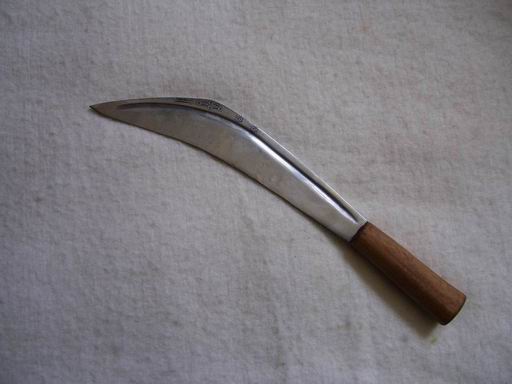
 Attachment: 33.33 KB Attachment: 33.33 KB
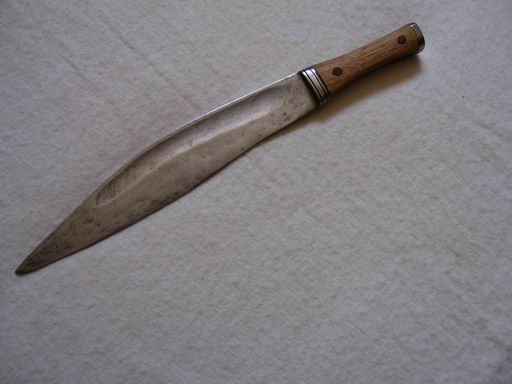
 Attachment: 28.18 KB Attachment: 28.18 KB
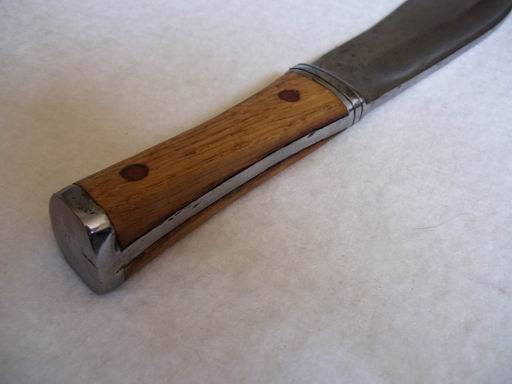
|
|
   |
 |
Jean Thibodeau

|
 Posted: Tue 07 Aug, 2012 8:22 am Post subject: Posted: Tue 07 Aug, 2012 8:22 am Post subject: |
 |
|
A few look extremely similar to a Kukri while others are a bit Yatagan or a Seax with a bend in the middle.  
You can easily give up your freedom. You have to fight hard to get it back!
|
|
  |
 |
Luka Borscak

|
 Posted: Tue 07 Aug, 2012 8:51 am Post subject: Posted: Tue 07 Aug, 2012 8:51 am Post subject: |
 |
|
|
What I like about these knives is that they are very long lasting designs. The ones I posted are made of bronze and from about 11th to 8th century BC and the ones made of iron pictured above are La Tene period...
|
|
  |
 |
Waldemar Duszka

Location: Polska Joined: 25 May 2012
Posts: 57
|
 Posted: Wed 08 Aug, 2012 4:13 am Post subject: Posted: Wed 08 Aug, 2012 4:13 am Post subject: |
 |
|
I finished the second Sica with pictures of zoomorphic hilt.
Linings made of antler and rivets are made of beech wood.
 Attachment: 43.97 KB Attachment: 43.97 KB
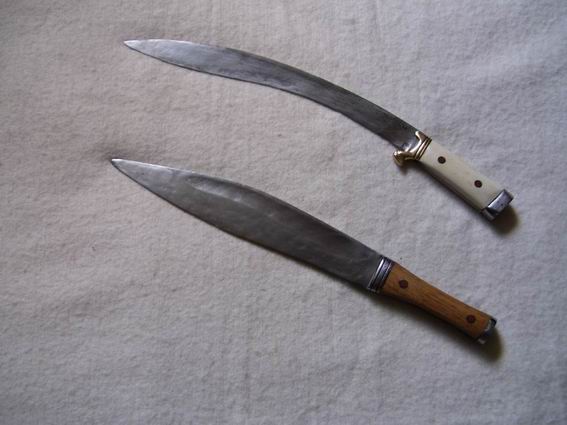
|
|
   |
 |
Stephane Rabier

|
 Posted: Wed 08 Aug, 2012 5:14 am Post subject: Posted: Wed 08 Aug, 2012 5:14 am Post subject: |
 |
|
Hi,
I hope I'm not off-topic but on the bronze "kukri shaped" sica, I see something like rivets although the hilt is one piece. Some fake rivets were seen as well on bronze swords, around the blade base, did the makers try to simulate a composite hilt/blade weapon on a one piece cast sword/knife?
Great work Ibor, really !
|
|
  |
 |
Waldemar Duszka

Location: Polska Joined: 25 May 2012
Posts: 57
|
 Posted: Wed 08 Aug, 2012 5:35 am Post subject: Posted: Wed 08 Aug, 2012 5:35 am Post subject: |
 |
|
Thanks Stephane
"Horse" is riveted with two rivets copper, 2mm.
I am doing combed swords from the Bronze Age which gives pseudo rivets.
Mostly in swords Liptov type, dating to 1100 BC
Cast in its entirety and scholars two rivets, around which they are decorating.
|
|
   |
 |
|
|

